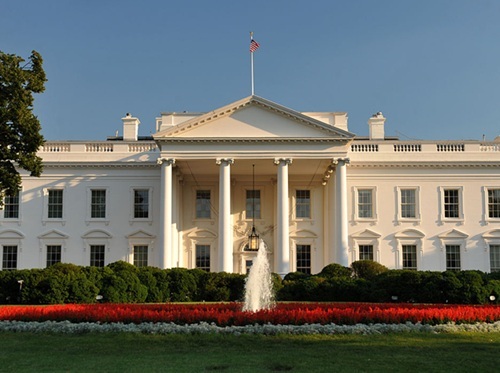The White House Council on Environmental Quality, in consultation with the National Energy Dominance Council and relevant permitting agencies, unveiled a “Permitting Technology Action Plan” on May 30 that seeks to modernize federal environmental review and permitting processes for infrastructure projects involving roads, bridges, mines, factories, power plants and more.
[Above photo of the White House vis Wikipedia]
In a statement, the Trump administration said this new permitting plan seeks to provide a “government-wide” technology optimization strategy to more effectively and efficiently evaluate environmental permits; allowing for seamless information exchange between agencies, simplified interactions for applicants, and greater transparency and predictability on environmental review and permitting schedules for sponsors and stakeholders.

The plan also calls for the establishment of a CEQ-led “Permitting Innovation Center” that, with the help of the General Services Administration’s Technology Transformation Services, will design and test prototype permitting systems and later advise federal agencies on what “best-in-class” technology tools to adopt.
CEQ added that this new permitting plan – a result in part of a memorandum issued by President Trump in April entitled “Updating Permitting Technology for the 21st Century” – also seeks to create a National Environmental Policy Act or NEPA permitting data and technology standard; a timeline and implementation roadmap for all federal agencies involved in infrastructure permitting; and a governance structure for said implementation.
The plan also aims to leverage technology to tackle “longstanding problems” identified in CEQ’s “E-NEPA Report to Congress” issued in 2023, such as reliance on outdated systems, fragmented data management, and disconnected digital tools.
“[We are] working tirelessly to implement innovation-driven environmental review and permitting reforms to eliminate needless delays that cripple the growth of the U.S. economy – replacing outdated technology with efficient, speedier solutions,” said Katherine Scarlett, CEQ’s chief of staff.
“Through interagency coordination, this administration has taken bold action to streamline the NEPA process and get America back to building infrastructure projects of all kinds,” she added.
 Top Stories
Top Stories
Modal Administrators Speak at AASHTO Annual Meeting
December 5, 2025 Top Stories
Top Stories

